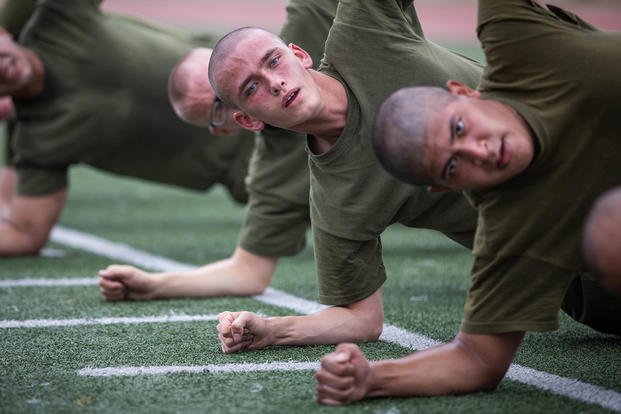During the process of building up your calisthenics volume to master PT tests or challenging selection programs, there will be days when it makes sense to do less and focus on balancing out previously overworked muscle groups.
The PT Reset is a core group of exercises that work the upper back and lower back. These muscle groups often are neglected. Here are some ideas to balance your hard work and help your recovery and posture at the same time:
1. Add pull-ups. Even if your PT test does not require pull-ups, they help balance out the pushing muscles used for standard push-ups, sit-ups and run-test preparation. If you cannot do pull-ups, do some form of pulling exercise, like rows or pulldowns. Rows are the perfect balance for push-ups as they work the opposing muscle groups in the same plane as push-ups.
2. The PT Reset circuit. Here is a core circuit that helps balance out many sets of push-ups and sit-ups by working the upper backside of the torso and the lower back. The exercises stretch the front side of the torso by flexing the back side of the torso. Also using isometric flexes of the lower back, these exercises are relatively safe for most people (active or inactive).
Repeat 2-3 times.
- Reverse push-ups 10-20
- Birds 10-20
- Arm haulers 10-20
- Swimmers for one minute
- Side plank for one minute (right)
- Dirty dogs 10-20/leg
- Donkey kicks 10-20/leg
The first three exercises (reverse push-ups, birds, arm haulers) are calisthenics to stretch the chest and work the opposing muscle groups (shoulder girdle, upper back) of push-ups. These are also great for posture and can be done at any age.
The swimmers and side plank are essentially lower-back exercises but actually engage the entire core. Any time you do sit-ups or crunches, you want to balance out your core with these lower-back exercises.
The final two exercises are hip exercises that will help with mobility, especially after practicing running for fitness tests and sitting (or standing) all day at work. These also work the glute muscles, which can help you prevent typical overuse running injuries like iliotibial band (ITB) syndrome.
When to Add to Your Workout
Adding this 10- to 15-minute circuit can be done when you perform your standard upper-body workouts as a cooldown. Or on an easy day or day off, you can mix in these exercises with stretching and mobility workouts during the middle or end of the week.
If you do it on the days that you actually push yourself with upper-body workouts, you can opt to do 1-2 sets of the circuit, versus three or more sets on a reset/Mobility Day Off.
Stew Smith is a former Navy SEAL and fitness author certified as a Strength and Conditioning Specialist (CSCS) with the National Strength and Conditioning Association. Visit his Fitness eBook store if you're looking to start a workout program to create a healthy lifestyle. Send your fitness questions to stew@stewsmith.com.
Want to Learn More About Military Life?
Whether you're thinking of joining the military, looking for fitness and basic training tips, or keeping up with military life and benefits, Military.com has you covered. Subscribe to Military.com to have military news, updates and resources delivered directly to your inbox.



















